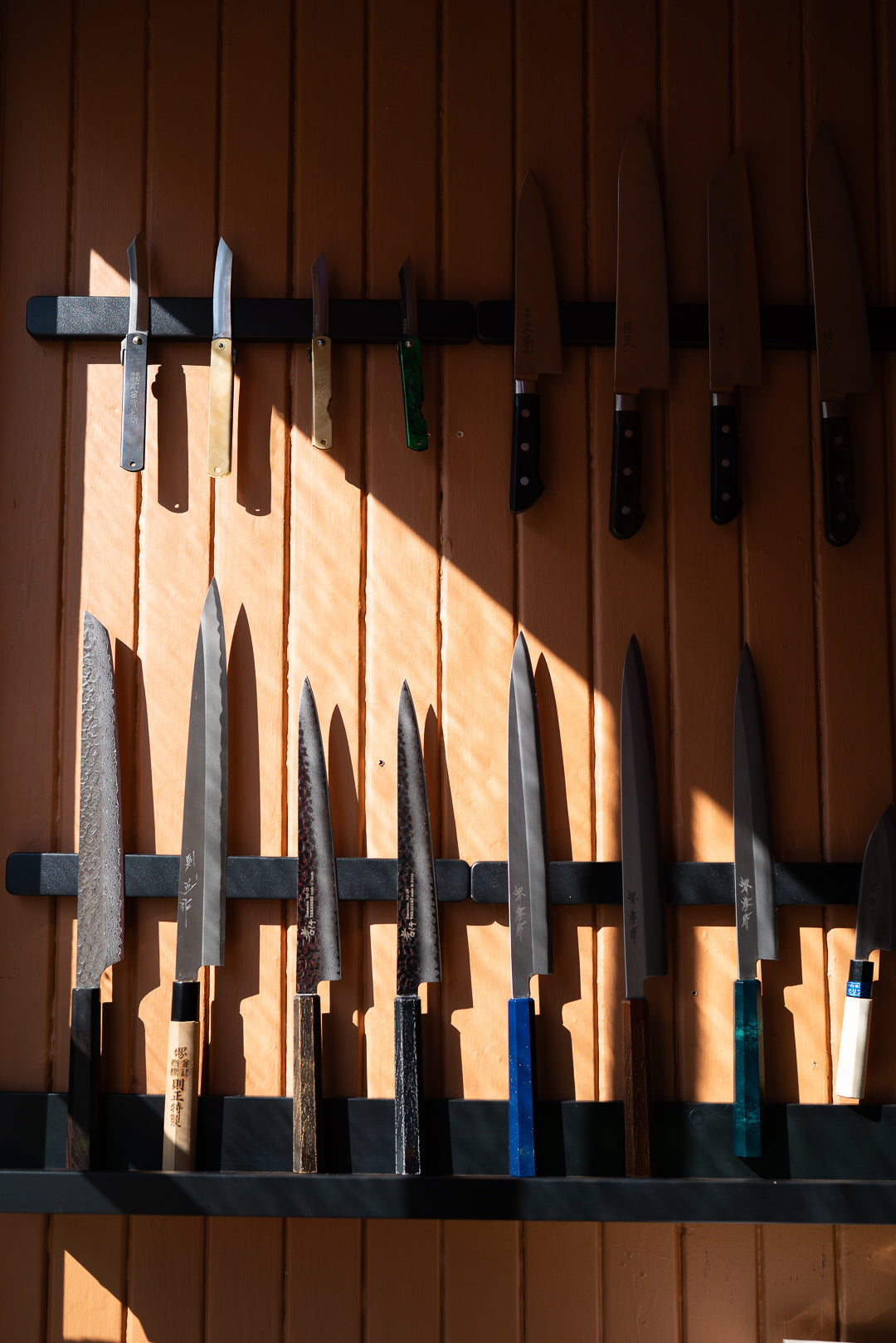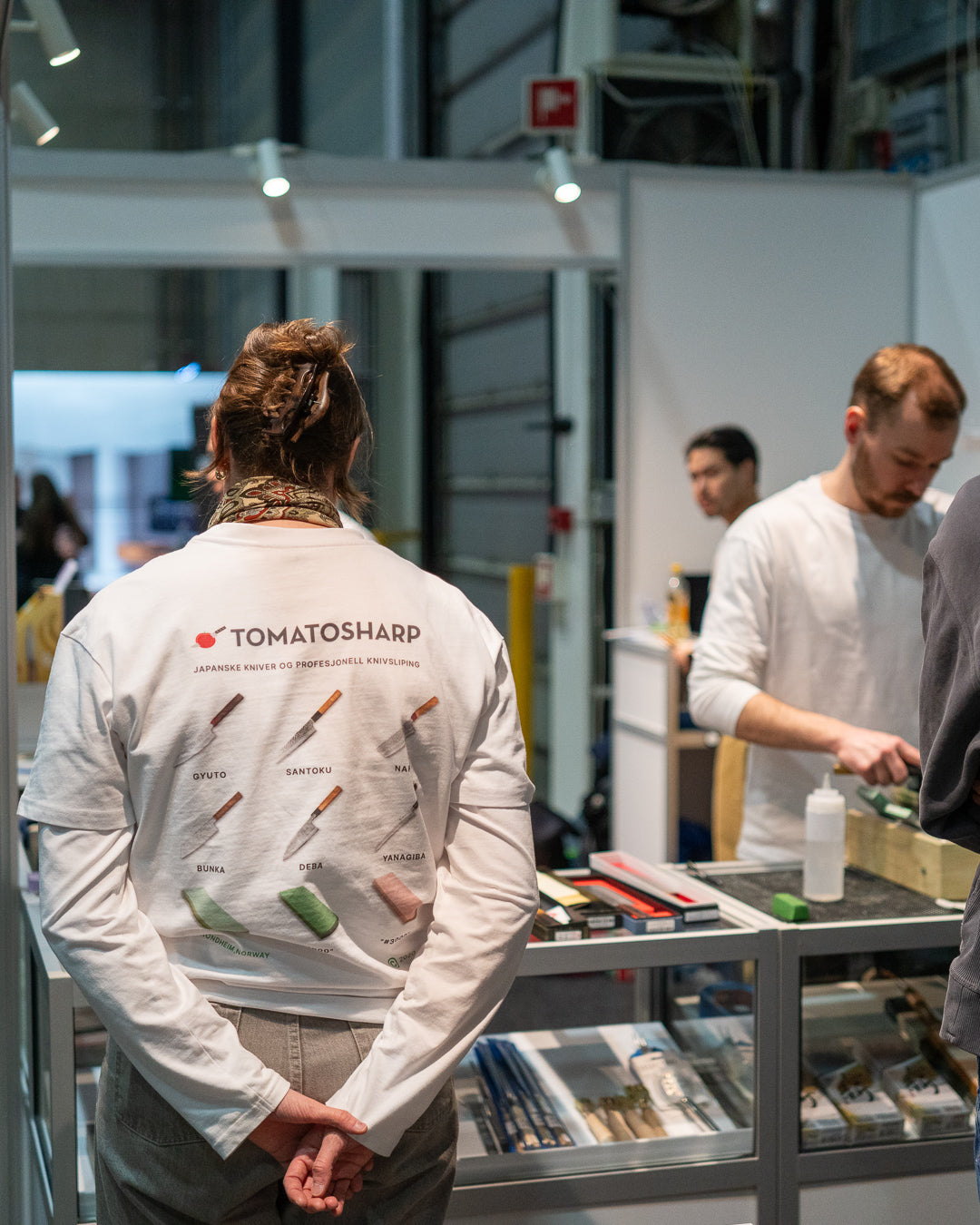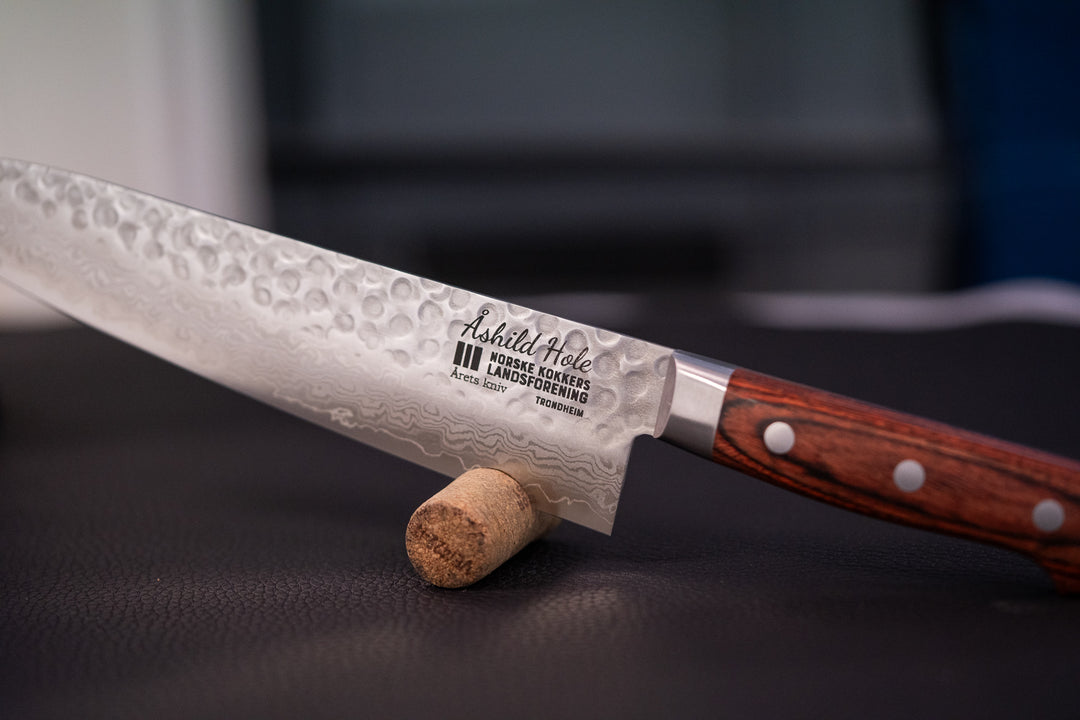Which steel is right for me? - A guide to knife steel types

Which steel is right for me?
Buying your first knife can be exciting, but also overwhelming. There are a wide variety of knives on the market, and one important factor to consider is the type of steel used in the knife blade. Knife steel affects sharpness, durability, and maintenance requirements. In this guide, we will explore the most common types of knife steel, so you can make an informed decision when choosing your first knife.
In short
When considering knives, carbon steel and stainless steel are the two most common types of steel you will come across:
Carbon steel is known for its exceptional sharpness and ability to retain a sharp edge over time. However, it requires more attention and maintenance to avoid rust.
Stainless steel, on the other hand, is resistant to corrosion and fits into a busy everyday life whether at home or in a professional kitchen. It is easier to maintain. The choice between carbon steel and stainless steel depends on your preferences and how much care you are willing to put into your knife.
Carbon steel
Carbon steel is a steel that is often used in Japanese knives. It is a mixture of iron and carbon that makes the steel very hard, which gives knives incredible sharpness and a long lifespan.
Knives made from carbon steel require extra care and maintenance. They must be dried thoroughly after use to avoid rusting. The knives can also develop a natural patina over time, which gives them a unique aesthetic. However, it is important to note that the steel can be somewhat brittle, and it may be more prone to chipping if used on hard surfaces or food.
These knives will hold a sharp edge over time, but require a little extra care and maintenance as they are more prone to rust. Additionally, the steel can be more brittle and can chip more easily when cutting through hard objects like bones and frozen foods. However, for those who value razor-sharp quality and are willing to put in a little extra care, carbon steel knives are a great choice.
White steel (Shirogami)
White steel is a steel made by removing as many impurities as possible. It is said to be the steel that most closely resembles Tamahagane, a steel used for Japanese swords. Due to its purity, this steel is very difficult to forge into knives, requiring many years of experience. White steel comes in grades #1, #2, and #3, with #1 containing the most carbon and being the hardest of the three.
White steel #1 (Shirogami #1)
Shirogami #1, also known as White Steel #1, has a higher carbon content than Shirogami #2. A higher carbon content in the steel makes the knife harder and stays sharp longer, but is more brittle than softer steels.
White steel #2 (Shirogami #2)
Shirogami #2 is a type of high carbon steel with a lower carbon content than Shirogami #1, making it slightly softer. Overall, it is a high quality carbon steel that offers exceptional sharpness. It is a popular choice among those who appreciate hand-forged knives.
Blue steel (Aogami)
Blue steel is the same as White steel, only with the addition of chromium and tungsten to increase wear resistance. Compared to White steel, Blue steel will stay sharp even longer, but will be more difficult to sharpen. Blue steel comes in “Super”, #1 and #2, with “Super” being the hardest of the three.
Blue steel #1 (Aogami #1)
Aogami #1, also known as Blue steel #1, contains the same amount of carbon as White steel #1, but is enriched with chromium and tungsten to increase the durability of the edge. However, it requires more patience when sharpening as the steel is very hard.
Blue steel #2 (Aogami #2)
Aogami #2, also known as Blue steel #2, contains the same amount of carbon as White steel #2, and is often used in Japanese chef's knives. It maintains a very sharp edge for a long time.
Blue super (Aogami super)
Aogami Super contains the same as Aogami #1, but with added molybdenum and vanadium to increase resistance to rust. This is considered some of the best steel, with exceptional sharpness.
Stainless steel
Stainless steel is generally a type of steel alloy that has a higher chromium content. Compared to knives made from carbon steel, stainless steel knives are more resistant to rust and require less maintenance.
It is important to note that these knives are not completely resistant to stains or rust. If exposed to water for a long time, they can rust, especially if the liquid contains salt.
VG-10
VG-10 is one of the most popular and renowned stainless steels from Japan used to make knives. The steel provides very good and long-lasting sharpness. It is a hard steel that requires more patience and sharpening.
Ginsan
Ginsan steel is a traditional forged stainless steel that has been widely used by Japanese chefs. Forging increases the strength of the entire blade, prolongs sharpness, and makes the blade easy to sharpen and resistant to chipping. Ginsan steel is a versatile steel that is resistant to rust, has good, long-lasting sharpness, and is easy to sharpen.
SG2 / R2
Super Gold 2 (SG2), developed by Takefu Special Steel, is an advanced powder steel alloy designed specifically for the production of knife blades. It is also one of the most popular high-quality powder steel alloys and can be hardened to a hardness of up to 64 HRC.
AUS10
AUS10 is a very good stainless steel that is easy to maintain and stays sharp. It is easier to sharpen than VG-10 as it is slightly softer.










Leave a comment